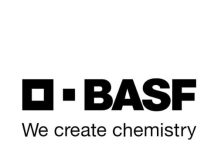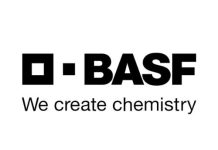 The need to produce food sustainably has gone beyond being the right thing to do – it is now a business imperative. But perhaps more importantly, sustainable farming reduces business risk by strengthening business resilience and mitigating against worsening climatic conditions in the future.
The need to produce food sustainably has gone beyond being the right thing to do – it is now a business imperative. But perhaps more importantly, sustainable farming reduces business risk by strengthening business resilience and mitigating against worsening climatic conditions in the future.
Failing to climate-proof this sector will have devastating consequences – significantly reducing the income from exports on which our economy relies, as more and more trading partners and consumers demand sustainably produced services and products; endangering jobs and livelihoods across the entire value chain; and posing a serious threat to food security.
While it is becoming increasingly relevant in the global economy, sustainability also brings wide-ranging business opportunities, including significantly boosting profitability. It may seem counter-intuitive that spending more money on sustainable business practices equates to higher profits, but numerous studies show that the most sustainable companies are also the most profitable.
I’m sold. How do I start my sustainability journey?
As with any financing transaction, affordability is the overriding consideration when it comes to sustainability finance. Responsible financiers like Nedbank will always have the client’s best interests at heart, as it is to no one’s advantage to place a client or borrower in financial distress.
To ensure that clients get the best bang for their buck, it is imperative for agribusinesses to have their needs evaluated carefully. Bigger is not necessarily better, and in most cases supplementation of energy needs, for example, is preferable to ‘going off the grid’ or producing more than required until feeding into the grid becomes more accessible.
Staying with the energy example, the average pay-back period is six to seven years on renewable-energy equipment, but it is important to consider that affordability increases when the electricity savings the equipment generates are considered. In certain jurisdictions, it is possible to feed surplus electricity back into the grid, thus generating a reduction in electricity bills, which results in further improved cash flow to be considered when calculating the affordability of the equipment repayments.
The devil is in the detail
In our experience, there are some nuggets of sound advice that apply to all companies – regardless of size or sector – that are weighing up their options in the sustainability space.
- First identify and manage the ‘low-hanging fruit’: Applying the ‘3 R’s’ (the principles of reducing, re-using and recycling resources and products) is an effective way of starting off on the sustainability journey. Start seeking out the simple, low-cost interventions such as installing grey-water systems and recycling wastewater for irrigation use, reducing fertiliser and pesticide use to improve soil health, and implementing an efficient waste management system that includes recycling and re-using where possible.
- Undertake an energy audit to identify energy guzzlers, consider scheduling usage in lower-tariff periods and use these efficiencies to fund more costly interventions. Bear in mind that the larger your agribusiness is, the higher the costs and the potential savings, and that it is possible to invest in sustainability equipment in phases. For example, install solar panels to generate electricity during daylight hours initially, with a view to installing the backup battery system at a later stage.
- When it comes to technology, get reliable references to ensure that you are dealing with a reputable supplier and installer.
- Shop around when looking for funding and look for finance specifically geared for sustainability inputs that consider longer-term payback periods and the cost reductions generated by the equipment itself. Our lending options in this space are proving extremely popular, with innovations including financing of renewable energy and efficiencies, specialised shade-netting finance and expert advice, technical assistance and finance solutions for sustainable agriculture transformation.
Climate change and sustainability are at the core of everything we do at Nedbank Agriculture, and our focus on water, energy and soil health are examples of how we are encouraging our clients to transition to sustainability through our lending. But we believe that our role goes beyond simply financing the transition: We use our banking expertise and understanding of the sector to raise awareness about climate risk and build the business case for sustainable farming, and we have frank discussions with our clients to advise them on future-proofing their businesses and to package funding solutions specific to their needs.
Doing more with less is imperative and will benefit us all, and the focus now must be on sustained production through the responsible use of the limited natural resources available to produce enough food for a burgeoning global population.














